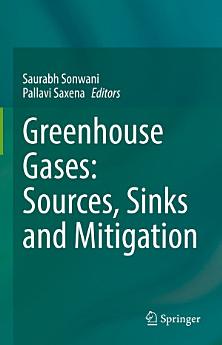Greenhouse Gases: Sources, Sinks and Mitigation
આ ઇ-પુસ્તક વિશે
લેખક વિશે
Pallavi Saxena is an Assistant Professor, Department of Environmental Science, Hindu College, University of Delhi. She has been awarded DST Fast Track Young Scientist Award at SES, Jawaharlal Nehru University, New Delhi. She has completed her Postdoc from SPASC, Physical Research Laboratory, Ahmedabad, India. She has been awarded Doctor of Philosophy in Environmental Studies from the University of Delhi on ‘Effect of Photochemical Pollutants on Plant Species’. Her area of interest is air pollution and plant physiology. She is elected as Chair of South Asia and Middle East Region of ECR, iLEAPS, UK. She has also been a co-author and collaborator from India in TOAR from 2015 onwards. Till now, she has published about 45 research publications in journals/books in Atmospheric Science and published 4 books in the field of Air Pollution and Plant Health in Springer and other publishers. She is also an Advisory Board Member of APSI, USA.






